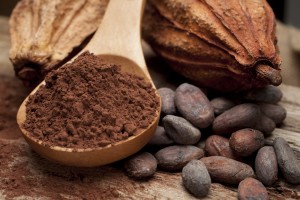
hiphoto39/Dollar Photo Club
While the idea that chocolate is good for us seems to have made it to the general public, there are still some patients I come across who are not aware.
The history of chocolate goes back some ways, but the origins are usually pinned to the Olmecs and Matans in Mexico. Cacao. Food of the Gods. Theobroma cacao. This was the beginning of learning how to process cacao into cocoa and chocolate. (Just in case you’re really interested in learning about the entire history and industry, Cornell University has an excellent overview that can be found by clicking here)
For years, I thought someone had just been spelling cocoa wrong when I saw cacao written. Not so. Cocoa is made from cacao seeds. Cacao itself is a very heavy-hitter when it comes to good health. Specifically good blood vessel health. And if you have healthy blood vessels, you are at a much lower risk of heart attack, stroke and dementia. That’s most likely why we see the benefits of cacao products on these conditions.
But, in the back of everyone’s mind is the concern that chocolate has calories and too many calories are going to lead to obesity and diabetes.
Let me clarify something first. When I talk about “chocolate” I’m not talking about the low-quality-hardly-deserves-the-label-of-chocolate chocolate found in things like Hershey’s chocolate, Ovaltine and Reese’s peanut butter cups. Nope. I’m talking about the higher cacao content chocolates made by companies like Endangered Species, Green and Black, Ghirardelli and Godiva. And stay away from cacao processed with alkali, as this will lower the level of protective compounds in the end product.
A study evaluating chocolate intake in European teens found that higher chocolate consumption led to lower body weight and body fat. Definitely good news.
Another study that relates to weight gain is the chocolate and the risk of developing diabetes. This study originally published in 2014 (online–print version in 2015) began to demonstrate that those with higher chocolate intakes had lower risk of developing diabetes. Again, good news.
Fast forward to this particular study, in which researchers combed through the data of the Physician’s Health Study, looking at the relationship between 18,235 male doctors’ chocolate intake and overall risk of developing diabetes. Here’s what they found after following this group for an average of 9.2 years:
- Those who had chocolate 2 or more servings per week had a 17% lower risk of developing diabetes.
- This protection from chocolate consumption was slightly stronger in those men who did not have heart disease.
- The protection was mainly present in younger men and those with a more ideal body weight.
While a 17% lower risk of developing diabetes is not earth-shattering, the fact that eating the “food of the gods” a few times per week was all it took to achieve this lower risk is hard to argue. Add in some short-burst aerobic exercise and raw nuts and cut out refined carbohydrates and you’re going to have to be a Pima Indian just to have a risk for diabetes.
